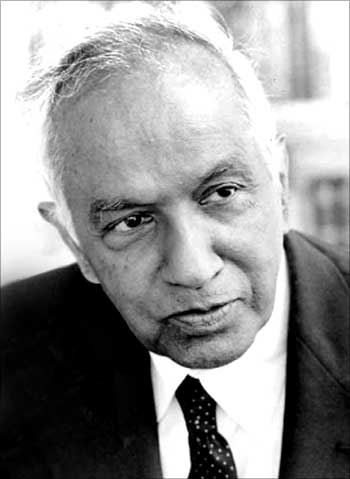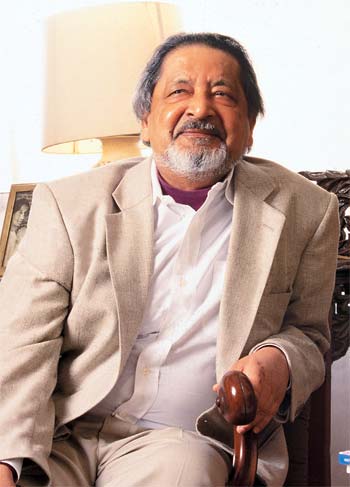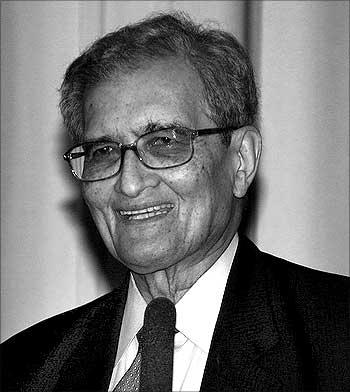
Stories of extreme hardship, braving impossible odds and innumerable sacrifices, abound in the lives of nearly 90 per cent of the students in the country. But among them, some perform exceptionally well. Their academic laurels are so brilliant, that at times their CV looks intimidating. And each one acknowledges that it's the right education that made them what they are today. Careers360 identified 40-odd brilliant students of this country. Most of them came from very dire conditions.
Here, in the sixth part of the series we feature five of India's V Ramakrishnan, Har Gobind Khurana, Subramaniam Chandrasekhar, VS Naipaul, Prof Amartya Sen.
V Ramakrishnan
Nobel Laureate in Chemistry, 2009
Born in 1952 in Chidambaram, Tamil Nadu and referred to as Venki by his friends, Ramakrishnan shared the Nobel Prize with Thomas E Steitz (US) and Ada E Yonath (Israel) for their "studies of the structure and function of the ribosome".
After completing most of his schooling in Baroda, and pre-science at the Maharaja Sayajirao University of Baroda, he graduated in Physics in 1971, with the National Science Talent Scholarship. While completing his PhD in Physics (1976) from Ohio University he began reading the Scientific American, a biological sciences journal, which kindled his interest in biology.
His octogenarian father Professor CV Ramakrishnan informed students at the Nirma Institute of Management Studies at Nirma University, "He got married and had two children. But he also wanted to get a good background in biological science and one university (University of California, San Diego) was prepared to admit him for a doctorate in Biological Science. He got a scholarship of $3000 per year."
Venky's American wife Vera Rosenberry asked him to go ahead even though funds were insufficient to support the family. So, he did all the integrated courses for two years while his wife managed within their means. "She stopped eating processed foods and grew vegetables in her garden to save money," his father elaborated. After completing the courses, Yale University offered Venki a scholarship of $30,000-40,000 to work on ribosome along with his fellow Nobel Laureate.
An IIT aspirant when he was young Venki did not make the cut, he told a packed audience. His parents did not believe in coaching classes (in preparation for entrance test) and thought of them as "nonsense".
Honours & Awards
Part I: Education made him: Dr Manmohan Singh
Part II: Kiran Bedi, CV Raman, Shyam Benegal, P Venugopal
Part III: Homi Bhabha, Arun Sarin, Rabindranath Tagore, Hafeez Contractor

Genetic code cracker
BSc & MSc, Punjab University
PhD, University of Liverpool
He is best known for developing chemical methods to determine the nucleotide sequence of ribonucleic acid (RNA) and for deciphering the genetic code. He was born in the small village of Raipur, and his father was a village employee. Although poor, his father was dedicated to educating his children and they were practically the only literate family in the village inhabited by about 100 people.
He attended DAV High School in Multan (now West Punjab), and received his BSc and MSc degrees from the Punjab University in Lahore. In 1945, the award of a Government of India Fellowship made it possible for him to go to England where he studied for a PhD at the University of Liverpool.
In 1952 he went to the University of British Columbia, Vancouver, Canada. which offered at that time very little by way of facilities, but freedom to a researcher to do what he liked.
He was awarded the Nobel Prize for Medicine and Physiology in 1968 with Marshall Nirenberg and Robert Holley for cracking the genetic code. They established that this code, the biological language common to all living organisms, is spelled out in three-letter words: each set of three nucleotides codes for a specific amino acid.

BA (Hons) Physics, Presidency College, Madras, 1930
Graduate studies at the University of Cambridge
PhD at Cambridge University, 1933
The third of 10 children, he was tutored by his parents and private tutors at the elementary school level, in Lahore. His first scientific paper was published in the Proceedings of the Royal Society in 1928. On the basis of this paper he was accepted as a research student by RH Fowler at the University of Cambridge.
He presented his initial conclusion in the form of a research paper at a meeting of the Astrophysical Society on January 11, 1935. Reputed scientists ridiculed him and rejected his finding. This limit is now known as the Chandrasekhar limit.
He obtained his doctorate in 1933 and was then awarded the Prize Fellowship at Trinity College, Cambridge. In 1937, he accepted the position of Research Associate at the University of Chicago. Chandrasekhar stayed at University of Chicago throughout his career, becoming the Morton D Hall Distinguished Service Professor in Astronomy and Astrophysics in 1952.
The very same year, he established the Astrophysical Journal and was its editor for 19 years, transforming it from a local publication of the University into the national journal of the American Astronomical Society.
In 1983, at the age of 73, he was awarded the Nobel Prize for science for his theoretical work on the physical processes of importance to the structure of stars and their evolution. His research explored nearly all branches of theoretical astrophysics and he published 10 books, each covering a different topic, including one on the relationship between art and science.
Did you know...

BA English, University College, Oxford, 1954
Sir Vidiadhar Surajprasad Naipaul was born in Chaguanas, Trinidad, a dot in the Caribbean Sea. His forefathers were indentured labourers on the island, but his father, Seepersad Naipaul, was self-taught and changed the course of his life by becoming a journalist.
Influenced by his father, at the age of 11, Naipaul decided to become a writer, though he barely made the attempt to write anything then. He writes in Literary Occasions (2003) that, "I wasn't especially good at English composition; I didn't make up and tell stories at home."
Despite an unsettled life at home, he was brilliant in studies and won the island scholarship, his only hope for a better life. In Trinidad, prospects were limited as was evident from his father's professional struggles.
Naipaul arrived in England in 1950 on a scholarship to study English at University College, Oxford. After graduation and trying for a job for long without success, he got a part-time job with BBC's Caribbean Service. The only money he earned, after deductions, was eight guineas a week.
One late afternoon, in the room where he wrote his radio scripts, he wrote the lines of his first novel, Miguel Street (1959). But it wasn't until his fourth and most popular book, A House for Mr Biswas (1961), was published that his earlier novels such as Mystic Masseur (1957) and The Suffrage of Elvira (1958) received attention.
In 2001, Naipaul was awarded the Nobel Prize for Literature. In his Nobel lecture, he talked of the two worlds he was born into at once: the world inside his home, and the world outside it. Much of Naipaul's fiction is about identity and how one's place in the world is an ever changing idea. On writing, he said, "Talent, Proust says. I would say luck, and much labour."
Did you know...
After Oxford, he worked on a farm to tide over financial difficulties.
Awards

Born in Santiniketan, the university town established by poet Rabindranath Tagore, a close associate of Sen's father, Tagore is said to have given him the name Amartya meaning "immortal". Sen's ancestral home was in Wari, Dhaka, modern-day Bangladesh, and he studied at St Gregory's School, Dhaka, but partition made a move to India inevitable.
While studying at Presidency College, Calcutta (1951-53), his attempt to understand cultural identity based on clans and class remained a major concern. Leftist debates in an elitist college irked him. In 1953, he moved from Calcutta to Trinity College, Cambridge University, which he described as a battlefield due to the intense debates by opposing parties.
Here he earned a First Class (Congratulatory First) BA (Honours) in 1956 and a PhD in "The choice of techniques" in 1959. He retuned to Calcutta to work under AK Dasgupta on his thesis, and also applied for Trinity College's Prize Fellowship. He gained four additional years of freedom due to the Fellowship and studied philosophy, logic and epistemology, which always fascinated him.
He has taught economics at the University of Calcutta, Jadavpur University, and at the Delhi School of Economics, Oxford, London School of Economics, Harvard and was Master of Trinity College, Cambridge, between 1998 and 2004. In January 2004 Sen returned to Harvard.
Prof Sen's seminal contributions were initially in economic theory, and his work on famines and democracy is widely citied. Along with Dr Jean Dreze he had also worked on developmental paradigm. One of the most path breaking works in development, named Human Development originated during a collaborative work with another Harvard professor Dr Martha Nusbum. Dr Sen also takes active interest in political scenario in India, and has consistently stood up against narrow sectarian considerations.
Did you know...
At Cambridge, he was part of a Secret Society 'The Apostles', established in the 1800s, which held discussions and meetings, but the exact purpose of the society remain a mystery. At the age of 23, he was appointed to set up a new department of economics at Jadavpur University, causing an uproar because of his young age.
Awards
Publications